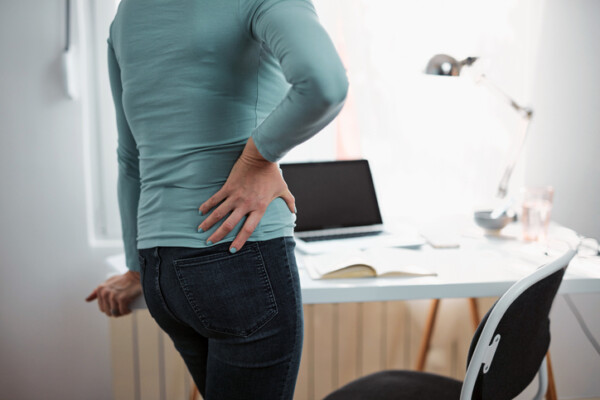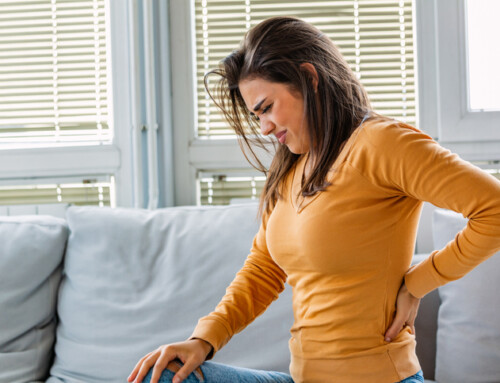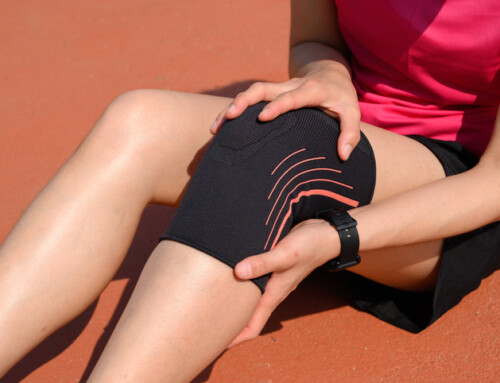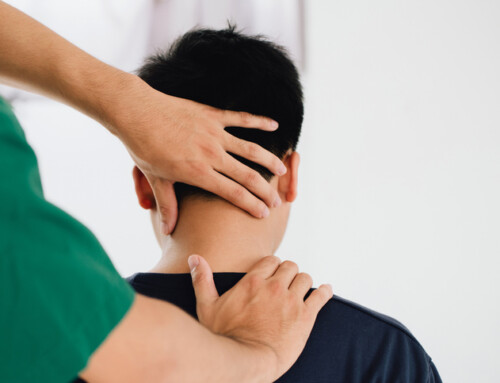
by Allison Perry, SPT
Symptoms
Do you struggle with a deep aching or sharp pain in the outside of your hip when walking, climbing stairs, or even just when lying on your side in bed? Gluteal tendinopathy (GT) is the most common cause of lateral hip pain and often presents with these symptoms.
Relevant Anatomy and Potential Causes
By placing your hand on the side of your hip, you may be able to feel a bony prominence, which is known as the greater trochanter. This is a part of your femur bone and serves as the attachment for the gluteus medius and gluteus minimus muscles. These muscles serve to lift your leg out to the side and are important for stabilizing your hip and pelvis when standing on one leg (walking, running, stairs). Gluteal tendinopathy refers to the degeneration or damage of these tendons. This degeneration may occur as a result of any of the following factors:
- Overuse and repetitive strain to the tendons
- Muscle imbalances
- Biomechanical factors
- Age related degeneration
Demographics/Incidence
Gluteal tendinopathy is most common in women and usually occurs around midlife (post menopause in women). This condition is equally likely to occur in individuals who are athletes as it is in those who do not exercise regularly. Risk factors include sudden weight gain, wide pelvis, presence of other hip conditions, and hormone changes.
Trochanteric Bursitis vs. Gluteal Tendinopathy
Individuals with outer hip pain are often diagnosed with “trochanteric bursitis” or “hip bursitis”. This name suggests that inflammation of the bursa in the hip is the cause of the condition’s symptoms. However, it has been found that many people without symptoms have inflamed bursa, and those who have bursitis without involvement of the gluteal tendons usually have no symptoms at all, meaning the bursa is likely not contributing to symptoms. Thus, it is gluteal tendinopathy which is the most common cause for symptoms in the outer hip.
Treatment of GT
Physical therapy treatment, “wait and see” method, and corticosteroid injections are three common methods of treating gluteal tendinopathy. Through physical therapy, the implementation of expert education along with targeted rehab exercises for gluteal tendinopathy has been found to improve health-related quality of life and is cost-effective compared with corticosteroid injection and “wait and see” for treating gluteal tendinopathy.
Physical Therapy for GT
Physical therapy for gluteal tendinopathy will include the following:
- Education regarding modification of aggravating activities
- Targeted exercises for conditioning and strengthening the gluteal muscles
- Addressing any motion or strength imbalances in the core or lower extremities
- Motor control and gait training as needed
If you would like an evaluation for Gluteal Tendinopathy, Capital Area Physcial Therapy can help. Call (518) 289-5242 to make an appointment with our physical therapists in Malta, Queensbury, Saratoga Springs and Delmar.
References
- Fearon AM. Physiotherapy management of gluteal tendinopathy. Journal of Physiotherapy. 2025;71(2):81-90. doi:10.1016/j.jphys.2025.03.005
- Surdyka M. Gluteal tendinopathy. E3 Rehab. February 5, 2024. Accessed April 13, 2025. https://e3rehab.com/gluteal-tendinopathy/.
- Wilson R, Abbott JH, Mellor R, Grimaldi A, Bennell K, Vicenzino B. Education plus exercise for persistent gluteal tendinopathy improves quality of life and is cost-effective compared with corticosteroid injection and wait and see: Economic evaluation of a randomised trial. Journal of Physiotherapy. 2023;69(1):35-41. doi:10.1016/j.jphys.2022.11.007
- Gluteal tendinopathy: Symptoms, causes & treatment. Cleveland Clinic. April 3, 2025. Accessed April 13, 2025. https://my.clevelandclinic.org/health/diseases/22960-gluteal-tendinopathy.





